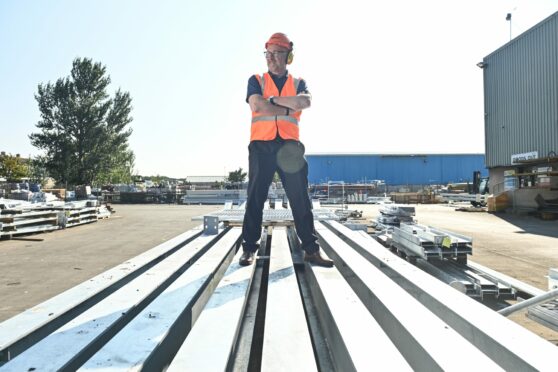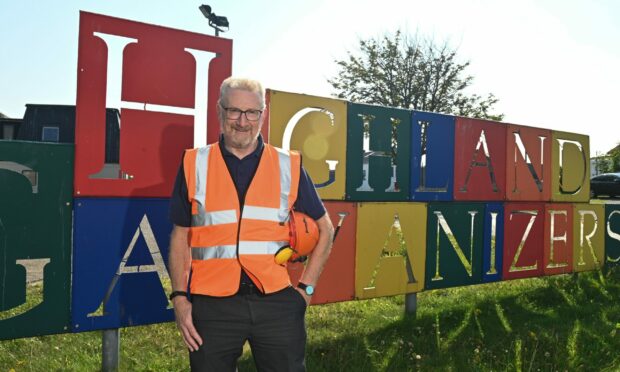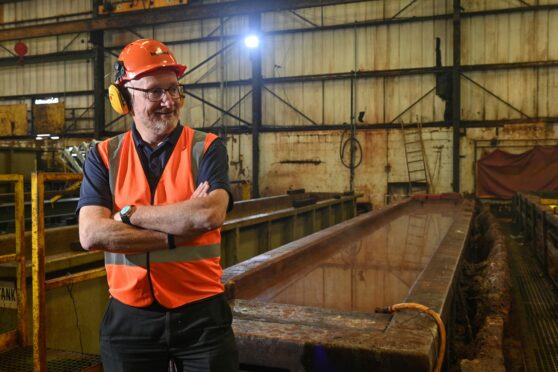The manufacturing sector is experiencing “welcome levels” of recovery in orders, output and exports which have all reached the highest level since 2018, according to a new report.
Industry body Scottish Engineering (SE) said that while “positive indices remain across the board” in its latest survey, companies still faced difficulty and uncertainty now and ahead in the shape of Brexit enforced import checks spiralling costs, particularly for energy.
The costs of raw materials and component cost increases have continued with net 57% and 58% respectively for small companies, the survey found.
Elgin-based engineering firm, Highland Galvanizers, has seen its order levels remain strong.
However, rising energy costs, in particular gas, have proved to be troublesome for the firm forcing it to consider upping its prices.
The company, which also has a factory in Cumbernauld, coats steel with a protective layer of zinc for customers who work in the construction, agriculture and engineering sectors.
Robin Steel, managing director of the 43-year-old company, was not surprised by the survey’s findings but describes the energy price increases it has faced as “astronomical”.
He said: “Probably the most significant factor of what is going on just now is the cost increases. We are high users of energy, particularly gas.
“And that has been what I can only call an astronomical increase. It’s got a huge impact on us just now and yes it has caused us to see how we can try to recover some of that from the end user.
“We have increased prices as a result.
And that has been what I can only call an astronomical increase.”
Robin Steel, Highland Galvanisers managing director
“Our normal time for a price increase is January.
“It’ll still need to come to pass. As much as we’ve increased prices I don’t think it’s enough to cover the costs.
“It’s a market-led decision.”
Orders on the up
SE’s report highlights order intake for the last three months up 35%, with same forecast outlook for next three months.
Mr Steel said this was reflected in his business although the arrival of Christmas season may herald signs of a lull.
“Up to now and probably after the first lockdown, the output and volumes of business have been very good,” he said.
“It’s been positive from an orders and quotes point of view. If anything maybe now there are slight signs that it’s dipping a bit, but it’s not something that will definitely be the case and also given the time of year.
“The nature of our business historically, forecasting is difficult.
“It is very much a jobbing environment. Post covid or during covid, we have worked hard to get our customers to give us more sight of what is going to come in.”

The report also showed measures for planned output, staffing, training, and investment are also up in line with a growing order book.
Problems with recruitment
One area where Highland Galvanisers has found it difficulty is recruiting. It currently has 106 staff on its books across the two sites.
Mr Steel said: “A significant issue just now is getting and keeping people.
“A lot of our work is definitely the lower end and unskilled initially. Trying to get people in has proven to be difficult.
“We are finding it a real challenge at the moment.
“But things for the industry are looking encouraging.
“I would stop short of saying I’ve got great optimism for the future because I think everybody has a fear of the recession hitting.
“The good news is that hasn’t come to pass. But there’s always a slight concern you’ll have a dip.”
Engineering companies to remain resilient
Paul Sheerin, Scottish Engineering’s chief executive, said: “One year ago when the path of the pandemic was less clear, manufacturers would have bitten your hand off for the recovery of demand which has continued for three successive quarters now.
“But it’s tempered by persistent headwinds in material and logistics costs and availability, with little sign of improvement to bring some optimism, so it’s no surprise that our average of responses forecast this situation will remain until the second half of 2022.
“As ever companies will take actions to remain resilient in the meantime, and for the skills and resource shortages the significant increase in plans for training investment reflects how seriously industry takes this despite the wider uncertainty they face.”

